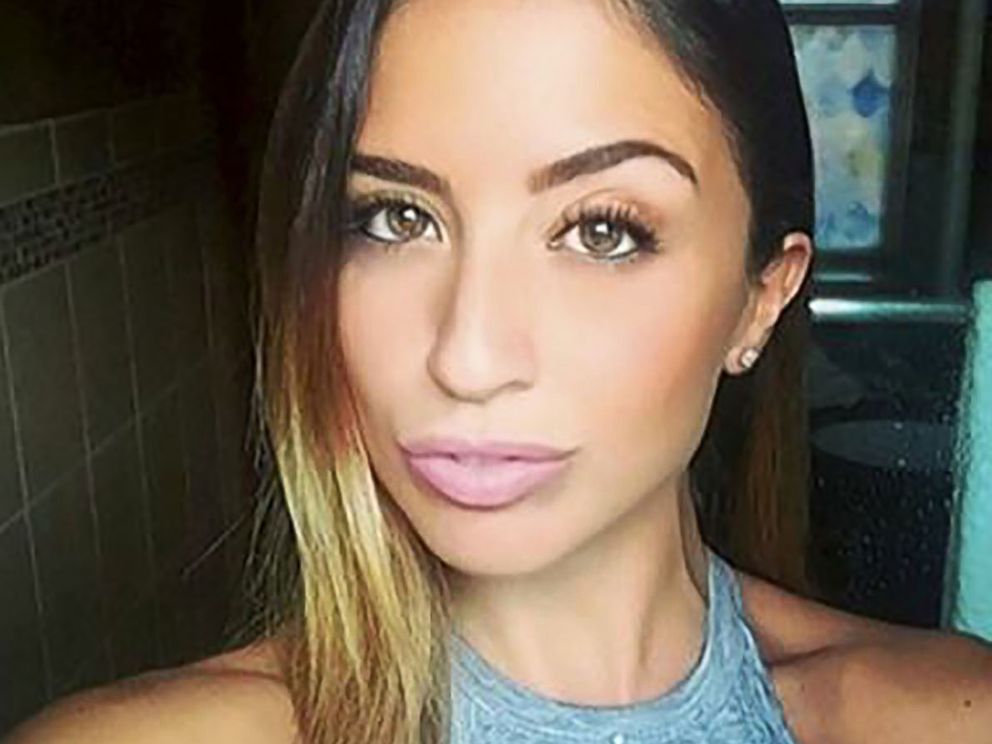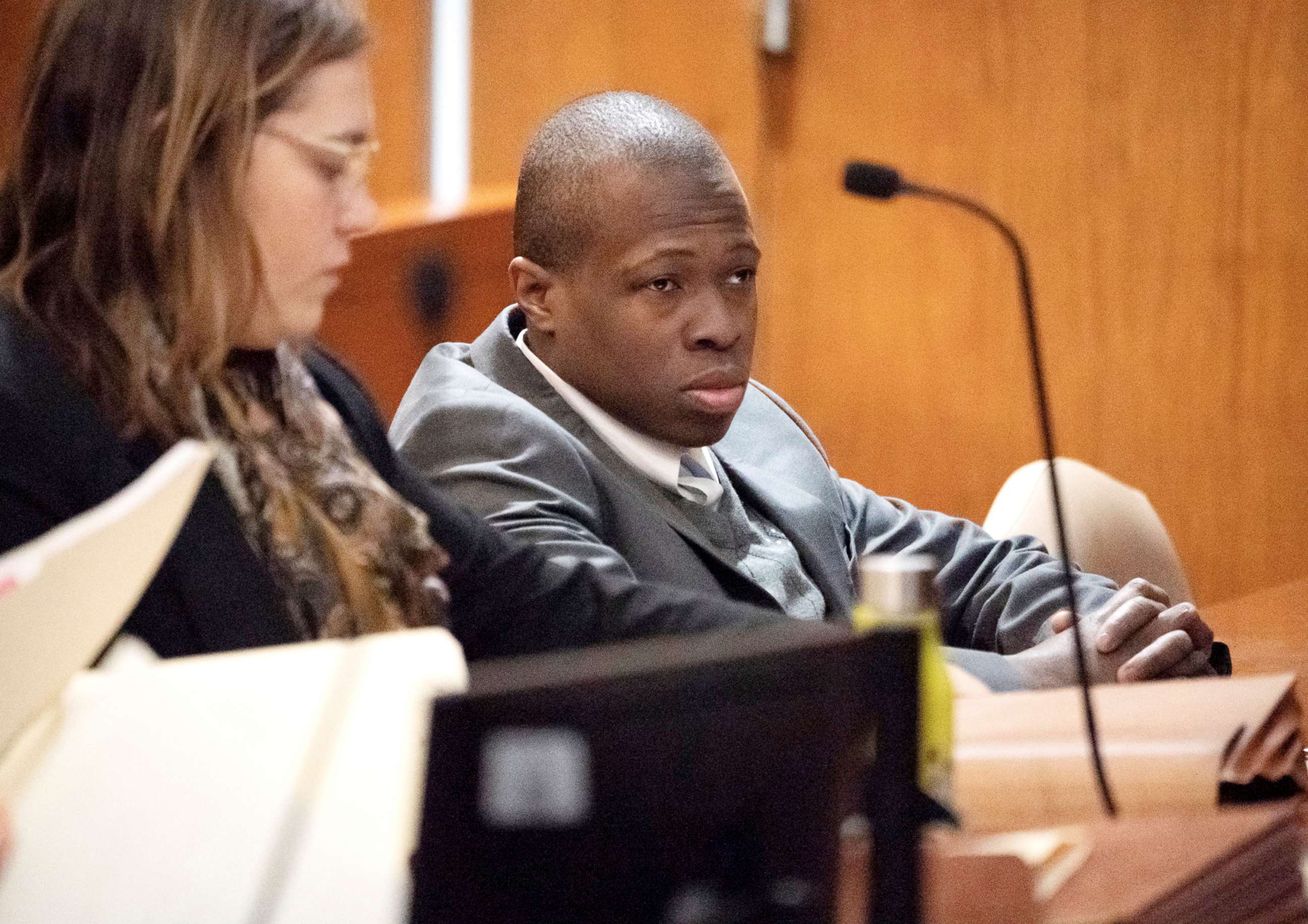3 jurors on the Karina Vetrano murder and sex abuse trial allegedly committed misconduct
Anonymous juror on Chanel Lewis' trial revealed the misconduct to the defense.
Defense attorneys for the man convicted of the 2016 killing of New York City jogger Karina Vetrano claim in a new motion that one juror on the high-profile murder case has accused three others of misconduct for disregarding the court’s directions about how and when to deliberate.
Queens District Attorney Richard A. Brown filed a response to the defense’s allegations that painted a different picture of what occurred the jury room.
A New York judge agreed to postpone the proceedings on Wednesday and will conduct a hearing with members of the jury that convicted Chanel Lewis, 22, who is facing the possibility of life without parole when he is sentenced.
Vetrano, 30, was found murdered a short distance away from her Howard Beach, New York, home after heading out for her daily jog. Prosecutors said Channel Lewis brutally attacked Vetrano during her run and as she fought back he strangled her to death.
Lewis had been scheduled to be sentenced on Wednesday after being found guilty of one count of first-degree murder, two counts of second-degree murder and sexual abuse, prior to the defense motion.
Earlier this month, a Queens jury convicted Lewis of all four charges after five hours of deliberations. Lewis’ previous trial last fall ended in a hung jury.

In the sworn affidavit cited in the motion, "Juror A" claims that "Juror B" began to discuss "Juror B's" conclusions about the case from the start of the trial and continued to do so throughout.
"Specifically, JUROR B stated to JUROR A, 'well, I have my mind made up, and I hope you do too' after the victim's parents testified on the second day of the trial," according to the motion.
Brown wrote that comments by “Juror B” — who is identified in their motion as the foreperson — “did not reveal a pre-existing bias, and the comment represented nothing more than one juror’s immediate reaction to graphic testimony regarding the condition of the murder victim’s body.”
Criminal juries are instructed by trial judges not to discuss the case amongst themselves until both sides have rested their cases and the deliberative process formally begins. During deliberations, jurors are required to limit their focus to only evidence presented at trial.
The affidavit goes on to assert that other jurors introduced information into deliberations -- some of it allegedly inaccurate -- that came from outside the scope of the evidence.
"JUROR D stated to the jury that the absence of Defendant's DNA in the victim's intimate swabs (specifically from the vaginal, perianal, and anal cavities) could be explained because the vagina is like a sponge or vacuum — it had absorbed the male DNA," according to the motion obtained by ABC News. "She specifically told JUROR A that she knows better and that 'you're just a man, I've been raped' ... JUROR D improperly supplemented the evidence presented at trial with her own personal experience in such a way that led others to feel they could not challenge her and had to take her at her word.
"This communication constituted juror misconduct because she became an unsworn 'expert' on the People's behalf. The jury thus ventured beyond the legally admitted evidence at trial," wrote Lewis' Legal Aid Society attorneys Robert Moeller, Julia L. Burke and Jenny S. Cheung.
“Juror D” — identified as “Juror #3” by prosecutors — denied saying to any juror that she was a rape victim, according to a sworn affidavit filed with the prosecutor’s answer. “I have never been raped and have never claimed to anyone to have been raped. To my knowledge, during jury deliberations, no other female juror made any comments in which they claimed to have been raped,” wrote “Juror D.”
In a similar instance cited in the motion, defense attorneys argued, another juror vocally drew conclusions based on information outside the scope of the case.
"[JUROR C] compared the injuries from the unrelated rape case to the injuries inflicted on Karina Vetrano and communicated that sexual assault was proven because the injuries were the same in both case," the motion charged. "The extrinsic information that JUROR C communicated to the jury was impermissible conduct and put the jury in possession of evidence not introduced at trial that was beyond the jurors' everyday experience, knowledge and common sense."
“Juror C” — identified as “Juror #9” by prosecutors — admitted to inserting prior experience as a juror in a Bronx rape trial into the Lewis case, but was “immediately” told by “Juror #5” not to do so and “did not discuss the facts of my prior jury service at any point thereafter,” according to a sworn affidavit from “Juror C.”
Brown defended “Juror #3” and “Juror #9.” “Neither juror presented themselves as a professional expert…Instead, each juror in the case drew upon one's personal life experience and relayed their own lay opinion. This was not misconduct,” the prosecutor wrote.

Before the jurors reached a verdict, they sent a note to watch Lewis' confession videos with detectives and prosecutors, but because of technical issues in the courthouse that request was delayed. During the delay to fulfill their request, "Juror A" said in the affidavit that "his fellow jurors were worried that they would be kept until the early morning hours if they were to view the video evidence again."
"Juror A" said he "wrote out a note to ask how long the juror would have to remain that evening. He stated that two other jurors said, 'why do you need to send that,' and that JUROR B then ripped up the note and did not send the communications to the Court," according to the motion.
"Juror A, as an individual juror, had an absolute right to communicate to the Court to clarify charges, instruction, evidence, or other procedural matters," according to the motion.
“Juror B” said in a sworn affidavit attached to the prosecutor’s response that he had “no recollection” of conversations with “Juror A” about his thoughts on the case and has “no recollection of writing or ripping up said jury note.”
In an exclusive interview with ABC's New York station WABC, the foreman Brian Morrissey said the evidence made "a slam dunk case." In a separate interview with another juror, who spoke to reporters after the verdict under the condition of anonymity, said he felt pressured by the other jurors to convict.




